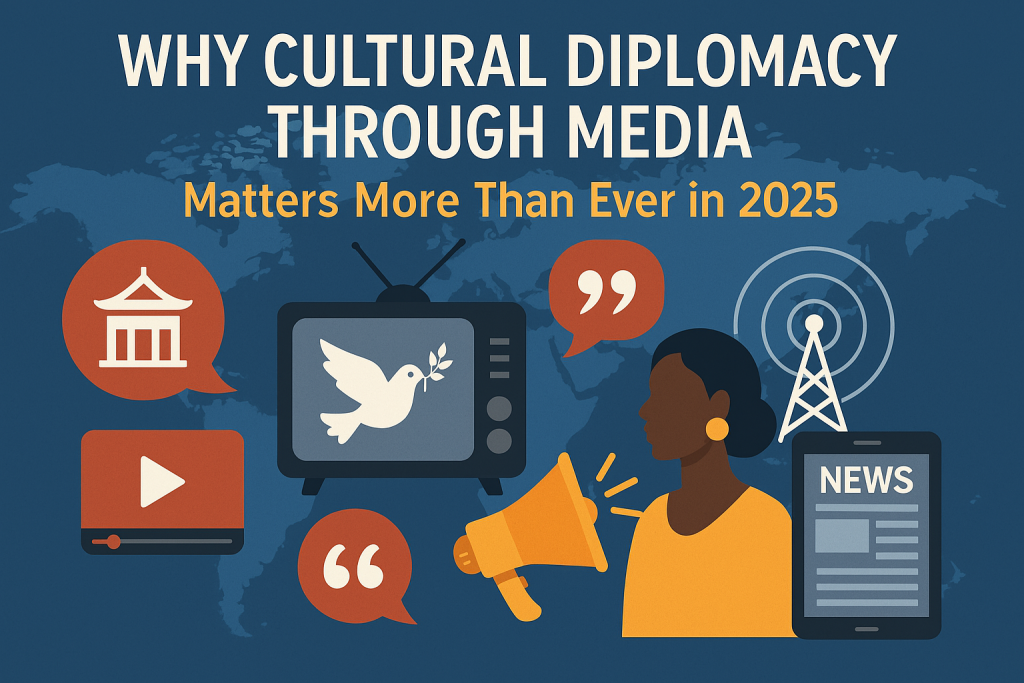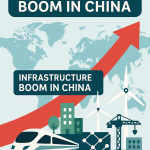🌐 Introduction: The New Battlefield for Influence Is Digital
What if the most powerful ambassador in 2025 isn’t a government official, but a K-drama, a TikTok creator, or a cross-cultural Netflix original?
In today’s media-saturated world, cultural diplomacy through media has emerged as one of the most potent forces shaping international perceptions and relationships. Unlike traditional diplomacy conducted behind closed doors, this form of soft power plays out on screens, streams, and timelines. In 2025, its impact is stronger, faster, and more global than ever.
📊 Regional Context: From K-pop to Nollywood to Chinese Documentaries

🌏 Asia-Pacific
South Korea’s dominance in cultural exports continues, with the government investing in “Hallyu 4.0” to support K-pop, Korean film, and gaming industries. China, meanwhile, is ramping up Mandarin-language content distribution across Southeast Asia and Africa through state-backed platforms like CGTN and iQIYI International.
🌍 Africa
Nigeria’s Nollywood is the second-largest film industry in the world. Its partnership with streaming giants like Netflix and Amazon Prime has helped reshape global narratives about Africa.
🌎 Latin America & Europe
Spanish-language dramas and Latin music have entered global Top 10 charts. Meanwhile, EU initiatives are funding media literacy and cross-cultural media co-productions to counter disinformation.
🕵️ Expert Commentary: Soft Power in a Post-Truth World
Dr. Ananya Sharma, Global Media Strategist at UNESCO, explains:
“In 2025, narratives are borders. If a country can shape the story, it shapes global sentiment.”
Meanwhile, Professor Liam Ford (LSE) points out:
“The rise of generative AI means countries must invest in trusted media voices. Authenticity and relatability are the new currency of diplomacy.”
📈 Why It Matters More Than Ever in 2025
✅ 1. Misinformation is now mainstream
With deepfakes and AI-generated propaganda on the rise, cultural exports offer a stabilizing influence rooted in shared values and art.
✅ 2. Media is faster than policy
A TV show, viral video, or meme can shift public sentiment in hours, influencing foreign policy decisions indirectly but powerfully.
✅ 3. Gen Z are digital diplomats
Young people in 2025 consume cross-border content daily. Their worldview is shaped less by textbooks and more by YouTube, Twitch, and TikTok.
✅ 4. Diaspora influence is peaking
Communities abroad are creating content that blends cultures, acting as unofficial ambassadors between host and origin countries.
✅ 5. Algorithms decide visibility
Whether cultural content reaches a global audience is increasingly decided by algorithms. That’s why strategic partnerships with platforms matter more than ever.
❓ FAQ: Frequently Asked Questions
1. What is cultural diplomacy through media?
It refers to a country or community using film, music, social media, or digital storytelling to improve foreign relations and global image.
2. Why is 2025 a turning point?
Because of the convergence of high-speed connectivity, AI-driven content, global political polarization, and the rise of new creator economies.
3. What countries are leading in cultural media diplomacy?
South Korea, China, the United States, Nigeria, and increasingly India and Mexico.
4. How can smaller countries participate?
By supporting local creators, engaging diaspora networks, and co-producing content that travels across borders.
5. Is this a replacement for traditional diplomacy?
No—it’s a complement. Cultural diplomacy often works faster, deeper, and with longer-lasting emotional impact.
🚀 Final Forecast: Where We’re Headed
In 2025 and beyond, cultural diplomacy through media will be a strategic necessity. Countries that fail to engage in this arena risk invisibility, irrelevance, or worse—being defined by others.
Whether you’re a policy maker, media executive, or cultural creator, one thing is clear: the battle for hearts and minds is being waged in the cloud.

